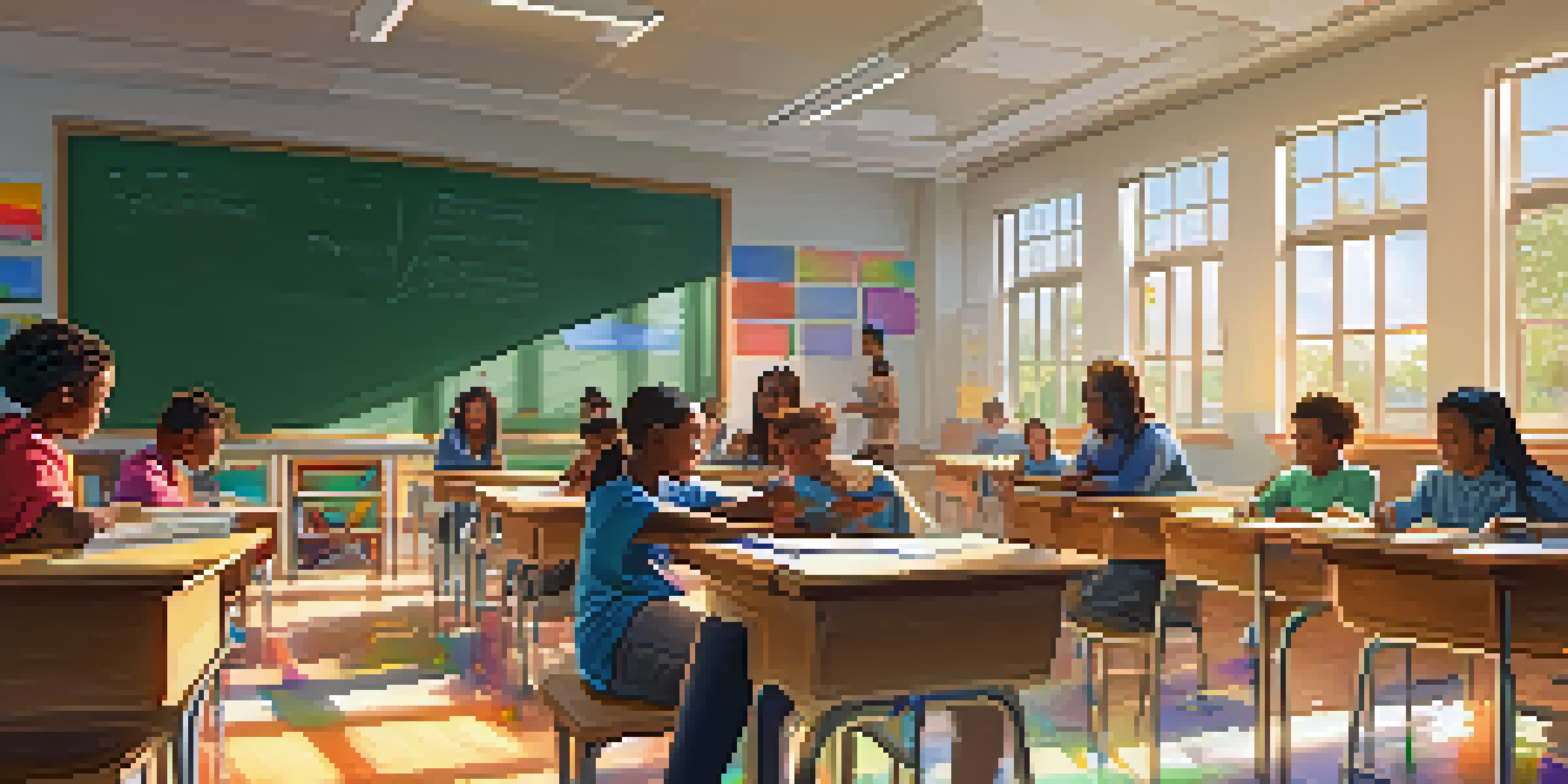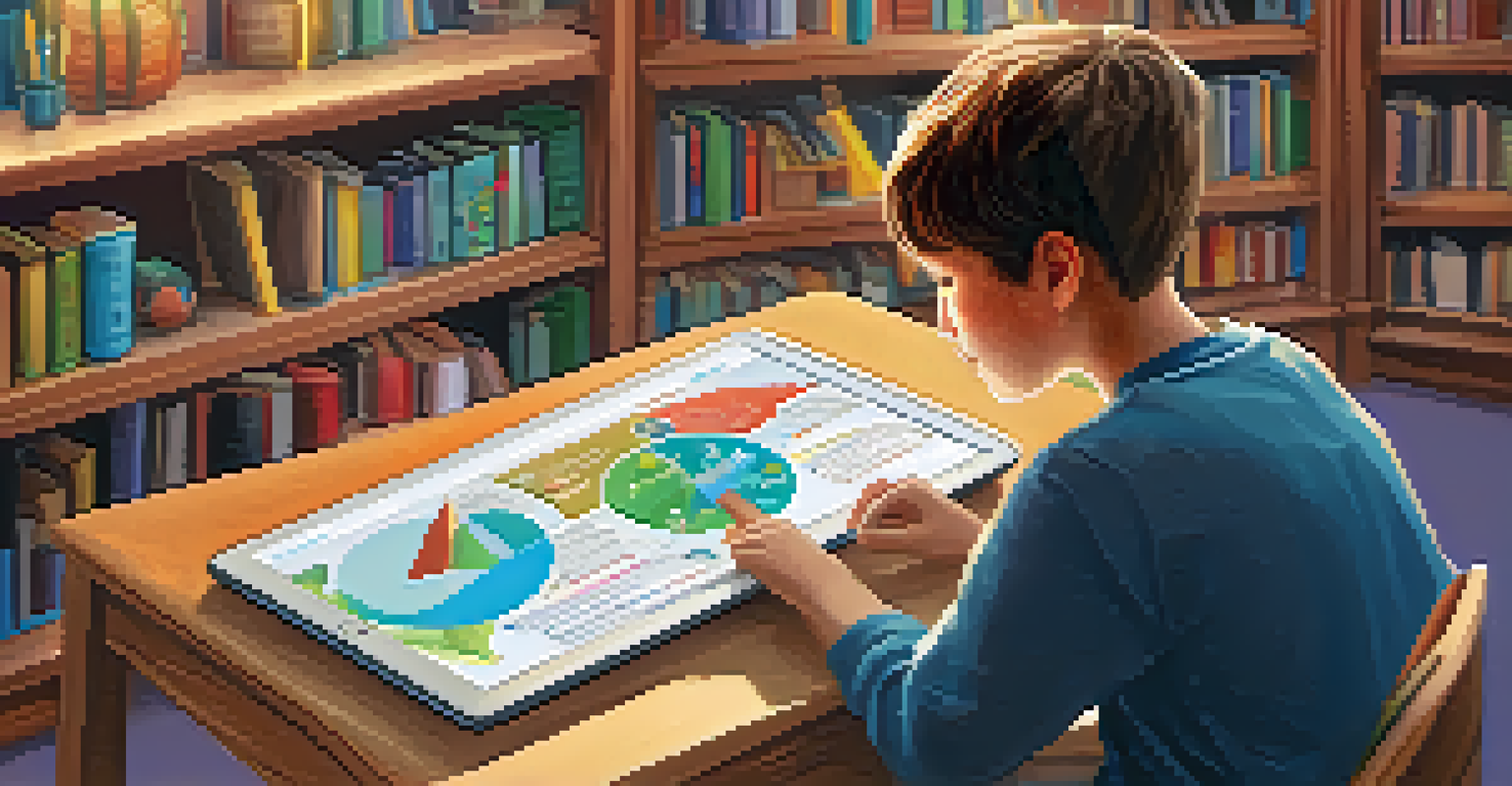The Role of Technology in Personalized Learning Experiences

Understanding Personalized Learning in the Digital Age
Personalized learning tailors educational experiences to individual students' needs, strengths, and interests. This approach empowers learners to progress at their own pace, making education more relevant and engaging. Technology plays a pivotal role in facilitating this customization, helping teachers create lessons that resonate with diverse learning styles.
Personalized learning is not just about technology; it’s about creating a supportive ecosystem where students can thrive.
For instance, adaptive learning platforms analyze student performance to recommend tailored resources, ensuring that each learner receives appropriate challenges. This not only boosts engagement but also fosters a sense of ownership over one’s learning journey. Consequently, students become more motivated to explore subjects that captivate their curiosity.
In essence, personalized learning is about more than just technology; it’s about creating a supportive ecosystem where students can thrive. With the right tools, educators can harness the power of technology to foster a more inclusive and effective learning environment.
The Technology Behind Personalized Learning
Various technologies drive personalized learning, from learning management systems (LMS) to interactive educational apps. These tools gather data on student interactions, enabling educators to tailor content and assessments to meet unique learning requirements. This data-driven approach ensures that instruction is responsive and adaptive.

For example, platforms like Khan Academy or Google Classroom allow teachers to assign specific activities based on individual progress. This means a student struggling with a concept can receive additional practice without feeling left behind. Such flexibility is crucial in today's diverse classrooms, where one-size-fits-all approaches often fall short.
Personalized Learning Enhances Engagement
Personalized learning tailors educational experiences to individual needs, making education more relevant and engaging.
Ultimately, the integration of technology in personalized learning transforms traditional education into a more dynamic experience. By utilizing these advanced tools, educators can create a responsive learning environment that fosters growth and achievement for every student.
Benefits of Technology in Personalized Learning
One of the most significant benefits of technology in personalized learning is its ability to enhance student engagement. Interactive tools such as gamified learning platforms make education enjoyable and exciting, encouraging students to participate actively. When students are engaged, they are more likely to absorb information and retain knowledge.
Data analytics provides insights that drive instructional decisions, ensuring that no student falls through the cracks.
Moreover, technology provides instant feedback, allowing students to identify their strengths and weaknesses in real-time. This immediate insight can motivate learners to improve, as they can track their progress and celebrate successes along the way. The sense of achievement fosters resilience, an essential trait for lifelong learning.
Additionally, technology bridges gaps in access to quality education. Online resources and virtual classrooms enable learners from various backgrounds to access the same high-quality materials, leveling the playing field. This democratization of education is a powerful step toward equity and inclusivity.
Challenges in Implementing Technology for Personalized Learning
While technology offers numerous advantages, implementing it effectively in personalized learning environments poses challenges. One significant hurdle is the digital divide; not all students have equal access to devices and high-speed internet. This disparity can hinder the success of personalized learning initiatives, leaving some students at a disadvantage.
Moreover, educators may require training to utilize these technologies effectively. Without proper support and professional development, teachers might struggle to integrate new tools into their teaching strategies. This gap can lead to underutilization of valuable resources that could enhance student learning.
Technology Bridges Educational Gaps
Technology provides access to high-quality educational resources, leveling the playing field for students from diverse backgrounds.
Finally, managing the vast amounts of data generated by educational technologies can be overwhelming. Educators must balance analyzing this data with actual teaching, which can be time-consuming. Finding ways to streamline data management is essential for maximizing the benefits of personalized learning.
The Role of Data Analytics in Personalized Learning
Data analytics is at the heart of personalized learning, providing insights that drive instructional decisions. By analyzing student performance data, educators can identify patterns and trends, allowing for targeted interventions. This proactive approach ensures that no student falls through the cracks.
For instance, if a student consistently struggles with a specific skill, data analytics can alert the teacher to provide additional resources or one-on-one support. This level of insight transforms how educators approach teaching, shifting from reactive to proactive strategies. It ultimately fosters a more supportive learning environment.
Moreover, data analytics can help schools and districts evaluate the effectiveness of their personalized learning initiatives. By measuring outcomes and progress, educational leaders can make informed decisions about resource allocation and program development, ensuring that every student receives the support they need.
The Future of Technology in Personalized Learning
As technology continues to evolve, so too will personalized learning experiences. Artificial Intelligence (AI) and Machine Learning (ML) are set to revolutionize how we tailor education, making it even more responsive to individual needs. These technologies can analyze complex data sets to provide insights that traditional methods simply cannot.
Imagine a classroom where AI-driven platforms adapt in real-time to each student’s learning pace and style, offering resources that align perfectly with their interests. This level of personalization could lead to unprecedented levels of engagement and achievement. The potential for innovation in this space is truly exciting.
Data Analytics Drives Instructional Success
Data analytics enables educators to identify student performance trends, allowing for proactive and targeted interventions.
Ultimately, the future of personalized learning will likely be characterized by collaboration between educators and technology. By embracing new tools while valuing the human touch, we can create learning experiences that are not only effective but also deeply meaningful for every student.
Conclusion: Embracing Technology for Personalized Learning
In conclusion, technology plays a crucial role in shaping personalized learning experiences that cater to individual student needs. By leveraging various tools and data analytics, educators can create engaging, inclusive, and adaptive learning environments. The benefits are clear, from increased student motivation to improved learning outcomes.
However, it’s essential to address the challenges that come with technology integration. By bridging the digital divide and providing adequate training, we can ensure that all students benefit from these advancements in education. The goal is to create a level playing field where every learner has the opportunity to succeed.

As we move forward, embracing technology in personalized learning will not only enhance educational experiences but also prepare students for an increasingly digital world. Let’s champion these innovations and work together to foster an education system that meets the needs of every learner.